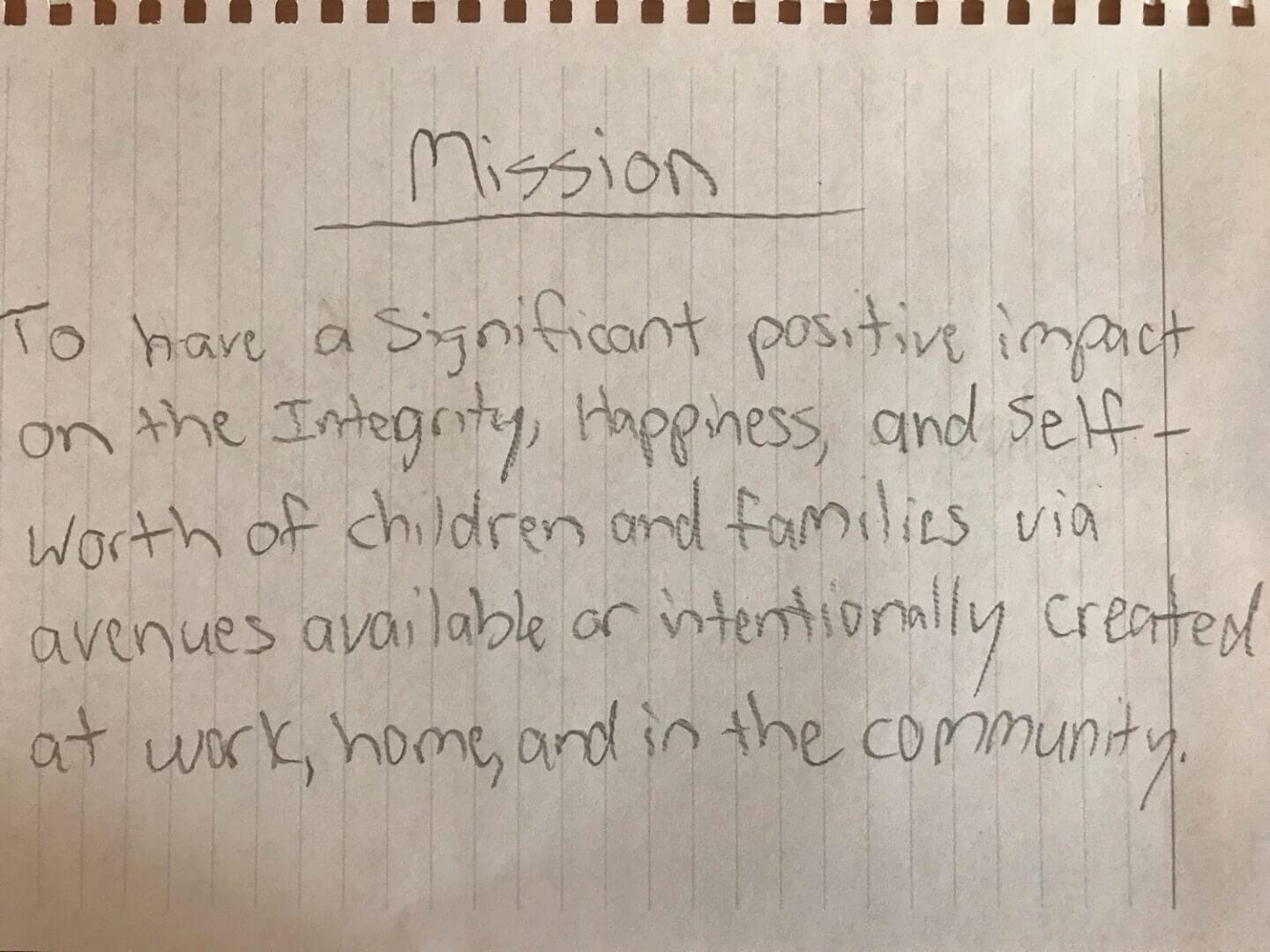

Pursue a Mission
Facebook
Twitter
LinkedIn
WhatsApp
In striving to live a life of healthy balance, I realized I couldn’t get there without a mission. What follows is an excerpt from my book, Navigate Chaos, available October 10 on Amazon. I hope this insight helps you find your mission and your balance.
(You’ll notice some questions throughout. They aren’t rhetorical. Answer them for yourself or join the conversation about them in the comments or on LinkedIn and Twitter.)
Several years ago, I wrote a personal mission statement as my primary motivation for what I do, how I do it, and why. I crafted this statement based upon an intentional reflection of my values and related questions. For several years, this was my mission:
To have a significant positive impact on the integrity, happiness, and self-worth of children and families via avenues available or intentionally created at work, home, and in the community.
I refer to this mission statement in the past tense because, when I developed it, I removed the pressure to discover a single life purpose. I acknowledge and accept that my mission may change as my life experiences evolve. I’m always open to such change and revisit my mission annually to ensure it continues to serve as a driving, compelling description of who I am, what I do, and why.
Over the years, I’ve made some modifications to my original mission statement. More recently, I leveraged an approach advocated by Adam Leipzig in a 2013 TEDx talk. Adam, the CEO of Entertainment Media Partners, challenged his audience to answer the following questions:
- Who are you?
- What do you love to do?
- Who do you do it for?
- What do those you do it for want or need?
- What do those you do it for get from it?
As I reflected on those questions, I noted the following as my responses to each:
- I am a husband, father, mentor, and coach.
- I love to inspire others through what I say, write, and do.
- I do this for zombies in life and for neglected children.
- These individuals seek a compelling purpose, a driving motivation, and encouragement.
- These individuals want this in order to discover peace and fulfillment in life.
I then consolidated these responses into a single revised statement of my mission:
I am a coach who, through words and actions, inspires zombies in life to seek a better way in pursuit of personal fulfillment and success.
If it’s not abundantly obvious, this revised mission, albeit similar to the original, was a driving force behind my motivation to write this book. It serves as a filter for the activities that I choose to support. It’s a daily reminder of my reason for being and the impact I seek to have in the world.
While I’ve shared with you a couple of examples of how I crafted my personal mission statements, there’s no single correct or best approach. Plenty of online tools are available to support your efforts to develop a compelling purpose that serves as a driving force in your pursuit of personal fulfillment and, ultimately, healthier life balance. A simple Google search on “how to draft a personal mission statement” currently reveals more than twenty-seven million options!
It’s important to remember: you don’t have to be famous to have a compelling purpose; you don’t have to have an exotic or inspirational job to have a compelling purpose, and you don’t have to seek permission or approval to have a compelling purpose. You simply have to uncover the most authentic version of yourself and determine the impact you desire to have in this world.
Consider the questions posed in this chapter. Journal your responses. Draft a mission and try it on for size as you proceed throughout the remainder of this book and your life. If you find that it doesn’t fit or it wears off over time, try something new. The key is to be intentional about your purpose and priorities at this moment of your life. In doing so, you’ll find that it’s easier to discover fulfillment and peace as you effectively manage the tension of life balance.
As you create your mission, consider the questions posed here and join the conversation in the comments or LinkedIn and Twitter.



